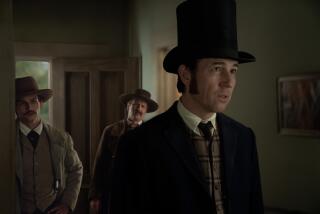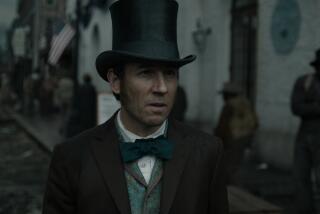As ‘Mad Men’ moves into 1968, Matt Weiner talks history
“Mad Men” returned to AMC Sunday night with a premiere that was criticized by some for being too slow – perhaps a touch ironic, given that the episode saw Don Draper and his colleagues ringing in 1968, a year that was anything but uneventful.
As faithful viewers know, “Mad Men” frequently uses the historical to illuminate the personal. In the climactic first-season episode, “Nixon v. Kennedy,” Don, a man of humble origins, faced a crucial challenge from Pete Campbell, born into the East Coast elite. Similarly, the assassination of JFK loomed over the show’s third season, set in 1963, and amplified the sense of dread surrounding the Drapers’ ill-fated marriage.
“The greatest thing about this job is that I get to learn so much, and I don’t just mean about history. I mean how history interacts with their lives,” said series creator Matthew Weiner.
PHOTOS: ‘Mad Men’ Season 6 premiere
So far, for most of the primary characters on “Mad Men,” this has meant experiencing the Vietnam War and the civil rights movement as distant abstractions – headlines from obscure towns and villages thousands of miles away that heighten the show’s moody, anxious atmosphere but aren’t a focal point of the narrative.
As Weiner put it, “I don’t want this to be a history lessson. I am always interested in the characters’ lives and what can be thematically told in whatever the event is.”
But as much as he’d like to avoid turning “Mad Men” into a primer on the ‘60s, it will be virtually impossible for the denizens of Stering Cooper Draper Pryce to steer clear of the conflict ahead. Sunday’s premiere, “The Doorway,” ended in the wee hours of New Year’s Day 1968. Each season of “Mad Men” covers roughly 12 months of fictional time, meaning Season 6 will straddle most of the infamous year that saw the assassinations of Martin Luther King Jr. and Robert Kennedy, President Johnson’s decision not to seek reelection and violent protests at the Democratic National Convention in Chicago.
And that’s just on the homefront: 1968 also brought the Tet Offensive and the My Lai massacre in Vietnam, and student uprisings in Prague and Paris.
While it seems unlikely that Don or his peers will march side-by-side with MLK in Memphis, at this point events are unfolding virtually on their doorsteps – in the spring of ’68, student protestors occupied Columbia University, located just a few miles uptown from the advertising hub of Madison Avenue.
Still, it’s nigh on impossible to predict just how “Mad Men” will make use of all this rich historical material, largely because Weiner often weaves in lesser-known events rather than relying on the “greatest hits” of the decade, which, he says, weren’t always viewed that way at the time.
“A lot of things we consider to be gigantic historic events that are covered in the history books as milestones are not experienced in that way at the time. Malcolm X’s assassination is not on the front page of the New York Times. The Watts riots were not covered by the New York Times or any newspapers for three or four days,” he explained.
“So you’re trying to do a story about it, and this is a huge event, and it’s like, you can’t really use it, it’s not part of [the characters’ lives].”
In contrast, an event like the Richard Speck murders, which popped in last season’s deeply unsettling “Mystery Date,” were something that would have penetrated the consciousness of even someone as priveleged and sheltered as Betty Francis, even if 45 years later they seem like a grisly footnote.
“It received so much attention at the time, but we’ve kind of forgotten about it. People know about it because it was so grisly, but it was really a shift in the perception of private safety and the kind of randomness that was in the world,” he says of the crime, in which Speck raped and murdered eight Chicago nursing students.
“And I don’t think people remember that the Texas [clock tower shootings]” – which popped up one episode later in “Signal 30” – “ happened within two weeks of that. That one-two punch would make you feel very, very agitated and insecure about the organization of society.”
So where do Weiner and his writing staff find all this material? One source that Weiner has used for inspiration is “The Glory and the Dream,” William Manchester’s epic social history of the United States from 1932 to 1972. “It’s filled with information and preception of events that have been forgotten,” he said.
Sounds intriguing, even if there weren’t too many of those in 1968.
ALSO:
Netflix to unveil new ‘Arrested Development’ episodes on May 26
‘Top of the Lake’ star Elisabeth Moss savors miniseries’ nuances
PHOTOS, VIDEOS & MORE:
Real places, fake characters: TV’s bars and eateries
PHOTOS: ‘The Ellen DeGeneres Show’ through the years
PHOTOS: Violence in TV shows
More to Read
The complete guide to home viewing
Get Screen Gab for everything about the TV shows and streaming movies everyone’s talking about.
You may occasionally receive promotional content from the Los Angeles Times.






